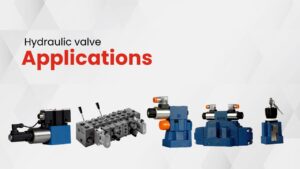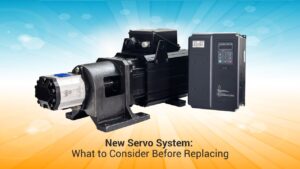Direction Control is a necessary component of robotics since it enables machines to move fast and make accurate motions with precision and stability. This function is used in modern robotics to grip, rotate, lift and assemble objects, where constant reversing of motor direction is needed.
Servo motor direction control is able to provide smooth transitions and maintain torque to ensure the error-free operation without delay and overshooting. This is among the reasons why servo motors are very efficient and reliable, and allow robotic systems to reach new levels of flexibility, productivity, and performance in industrial automation.
What is a Servo Motor?
A servo motor is a rotary or linear motor that allows angular or linear position, speed, and acceleration to be controlled very precisely. In comparison to regular motors, servo motors are equipped with:
- Correctional feedback.
- Very high efficiency in industry.
- Torque control of robotics.
Automation, robotics, CNC machinery, and packaging are some of the industries where the servo motors are extensively used in India.
Servo Motor Working Principle
A servo motor is based on a feedback mechanism. The motor position and speed is constantly monitored by a sensor and sent to the controller. In case of an error, the controller will modify the input to the motor in order to correct the movement.
Servo motors are the best to use in robotics where accuracy and precision are of great essence.
Servo Motor Direction Control in Robotics
1. Why Direction Control Matters
Direction switching in robotics does not only concern forward or backward rotation. Robots often need to:
Move arms to assembly lines.
Do back-and-forth movements during gripping or releasing activities.
Real time change angle positions.
2. Methods of Motor Direction Switching
Servo motors permit switching of the motor direction by:
Pulse width modulation (PWM): Tilts the angle or direction.
Controller programming: Defines forward, reverse or angular control.
Feedback sensors: Clarify the correct switching with no overshoot.
Advantages of Servo Motors in Robotics Motor Switching
High accuracy: Does not lose its accuracy when switching between modes rapidly.
Consistency: provides constant torque and speed.
Durability: Developed to support the frequent changing cycle.
Small size: It is easy to fit into robotic arms and equipment.
Servo Motor Applications in Robotics
Robotics Servo motors are commonly used in robotics such as:
Manipulators and robot arms.
Automated guided vehicles (AGVs).
Pick-and-place machines
CNC robotics
Medical robotics
Challenges in Constant Switching
Although the servo motors are very dependable, repeat switching may lead to:
- Heat generation
- Increased energy demand
- Wear on mechanical parts
Explanation: The modern servo motors manufactured in India are equipped with sophisticated cooling functions, enhanced materials and smarter control in order to eliminate these problems.
Tips for Efficient Motor Direction Switching
In order to increase the life of a servo motor in robotics:
- Direction switching, on the right controller.
- Do periodic maintenance of feedback systems.
- Never switch to overload.
Select the best quality motors of reputed brands such as THM Huade.
Conclusions: Why Servo Motors are the best in direction switching
Servo motors are considered crucial in the motor switching of robotics as they provide accuracy in direction control with long term reliability. Servo motors make it possible to change direction smoothly and precisely even on small automation jobs to more industrial robotics applications.
As a potential source of high quality servo motors in robotics, THM Huade offers robotics, automation and manufacturing solutions of high performance to industries in India. Call us now at Support team to discuss the most appropriate servo motor direction control solutions to your industry.
FAQs on Servo Motor Direction Control
Q1: How do servo motors control direction?
Servo motors are directionally controlled by electrical signal (PWM) which can move the motor shaft to an angle or a movement depending on the desired robotics control.
Q2: How to change direction in servo motor?
A servo motor changes the direction by changing the pulse width of the control signal and relocates the shaft clock wise or counter clock wise.
Q3: What is the working principle of servo motor?
A servo motor operates under closed-loop control whereby feedback is used to bring the motor to the desired position, speed, or torque and hold it in place.
Q4: Which type of servo motor can rotate continuously in either direction?
Continuous rotation servo motors are capable of rotating by 360deg in both directions and are therefore well suited to wheels, conveyor belts, and robotic motion systems.
Q5: Can servos rotate infinitely?
Normal servo motors have a limit to the amount of rotation they can do, but continuous rotation servos are made to turn indefinitely in either direction.
Q6: Which is better continuous rotation servo or stepper motor?
Speed and easy direction control are the advantages of continuous rotation servos, and accurate positioning and multi-step movement are the advantages of stepper motors.


